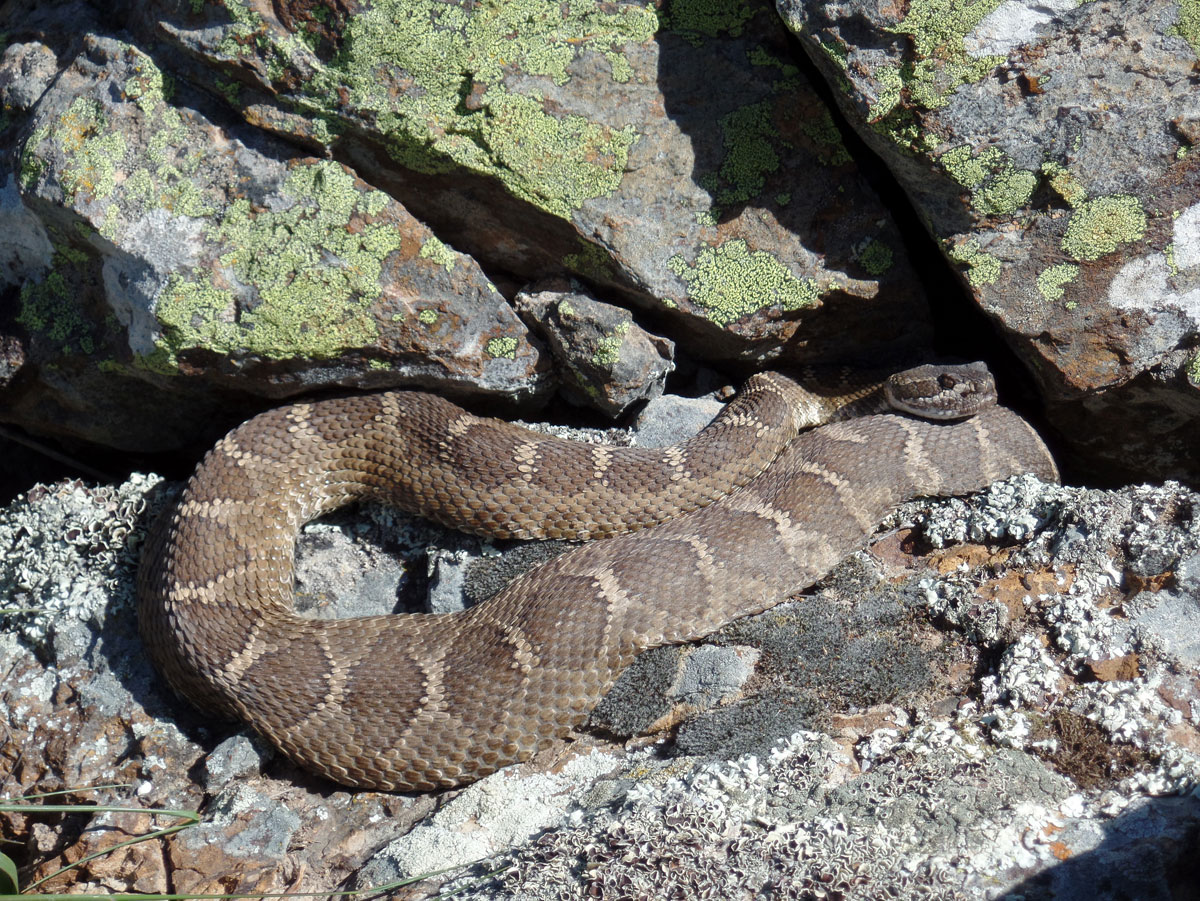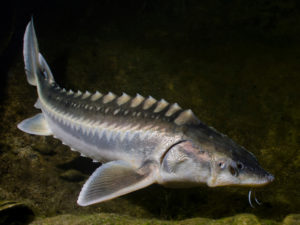Q: Do rattlesnakes in the Bay Area migrate and hibernate in dens?
A: My first response to this question was—really? Just how far can an animal without wings or legs migrate? But actually, the distance travelled is irrelevant. Migration is simply the seasonal movement to and from an area for the purpose of feeding and breeding.
In the Ozark Mountains, the U.S. Forest Service actually closes a road twice a year to allow copperheads, timber rattlesnakes, and cottonmouths to slither down from their wintering dens in limestone cliffs to summer feeding grounds in swamps.
The word for these dens is hibernacula—Latin for “tent for winter quarters”—and they are stable refuges from weather extremes, both the chill of winter and the heat of summer. Garter snakes, an abundant and widespread genus of snake in North America, are well known for wintering underground in tremendous numbers—as many as 10,000 were found in a single den site in Canada! But they only do that in colder regions and that’s not necessary in our temperate Bay Area climate.
Still, the northern Pacific rattlesnake (Crotalus oreganus oreganus), our local subspecies of the western rattlesnake—one of the 36 species of rattlesnakes found in the Americas (from Canada to Argentina)—does indeed overwinter in dens. And it migrates out from these dens in the spring to feed nearby, returning in October to spend the winter (though occasionally venturing out on warm winter days). How far they range is unknown, but it’s most certainly not as far as the rattlers in Wyoming. Those snakes travel up to five miles from the den!
In the last decade or so some exciting research has emerged on the social lives of rattlesnakes and their use of winter dens. For many years, scientists assumed that snakes were basically solitary animals and interacted primarily for mating. However, research on the timber rattler in the eastern U.S. and the black-tailed rattlesnake in Arizona presents an entirely different picture of these reptiles. The hibernacula provide not only refugia from the elements but opportunities for family interaction.
Thanks to DNA analysis and implanted tracking devices, we now know that these hibernacula are usually composed of extended family groups. Within the den, female rattlesnakes prefer to sleep right next to, or even entwined with, their sisters. These rattlesnake mothers also exhibit a high degree of parental care and lay down scents that enable their offspring (and other family members) to find their way back to the denning sites.
Whether these behavioral traits apply to all rattlesnakes is unknown because little research has been done.
Fortunately I know the location of a rattlesnake hibernaculum on a serpentine outcropping on the north side of Mount Tamalpais. It apparently provides the perfect sun exposure and ideal rocky crevices to hide in, and it presumably has been used by generations of rattlesnakes. I visit this one on a regular basis, especially when I want to impress out-of-town visitors by showing them our resident venomous snake.
The disadvantages of group living include easy transmission of diseases or parasites and a higher chance of predation. However, from living with your kin, there could be an improved likelihood that your brother or sister will survive and therefore your shared genes just may endure. Group living seems to be working quite well for the rattlesnake, which has been around a lot longer than we have.




